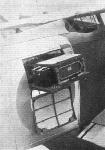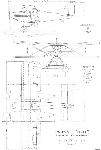
Parnall. Самолеты
<...>
В июле 1927 года Министерство авиации заказало разработку двух прототипов самолета Pipit, который являлся морским истребителем с металлическим каркасом и новым двигателем Rolls-Royce F.XI. Разработка, осуществлявшаяся по спецификации 21/26, предполагала дальнейшие сравнительные испытания с самолетами Hawker Hoopoe и Gloster Gnatsnapper. Однако ни один из этих трех самолетов не был одобрен.
<...>
Описание:
- Parnall. Самолеты
- Flight, June 1929
THE PARNALL "PIPIT"
Фотографии
-
Air Enthusiast 2003-01 / K.Wixey - The Bolas touch
Регистрационный номер: N232 [4] Single-seat biplane shipboard fighter with wheels or alternatively twin floats, powered by a 495hp (369kW) Rolls-Royce F.XI 12-cylinder Vee liquid-cooled engine. Two built, N232 (illustrated) and N233.
-
Flight 1929-06 / Flight
THE PARNALL "PIPIT": A dihedral on the top plane only is one of its characteristic features.
-
Flight 1929-06 / Flight
Регистрационный номер: N232 [4] THE PARNALL "PIPIT": Clean lines characterise this single-seater Ship's Fighter. The engine is a Rolls-Royce "F" type.
-
Flight 1929-06 / Flight
Регистрационный номер: N232 [4] THE PARNALL "PIPIT": In this three-quarter rear view the fuselage covering is shown in place.
-
Flight 1929-06 / Flight
Регистрационный номер: N232 [4] THE PARNALL "PIPIT": With Fuselage Side Panels removed.
-
Flight 1929-06 / Flight
Inspection is facilitated by quickly-detachable panels. The photograph shows the whole forward portion stripped.
-
Flight 1929-06 / Flight
Inspection is facilitated by quickly-detachable panels. The photograph shows the wireless compartment.
-
Flight 1929-06 / Flight
ONE OF THE ALL-METAL WINGS OF THE "PIPIT": The petrol tank is housed in the inner bay, and the photograph shows how the drag bracing, in the form of tubes, is carried around this bay.
-
Flight 1929-06 / Flight
THE CONTROL UNIT ON THE "PIPIT": Three-point suspension is adopted, and the pilot's seat can be raised and lowered. It is shown in the raised position on the left. Rubber cords are used to balance the weight of the pilot. The retractable radiator is supported on a threaded column as shown, and is operated by one of the two hand wheels.
-
Flight 1929-06 / Flight
Parnall "Pipit" Rolls-Royce F Type Engine
- Фотографии









